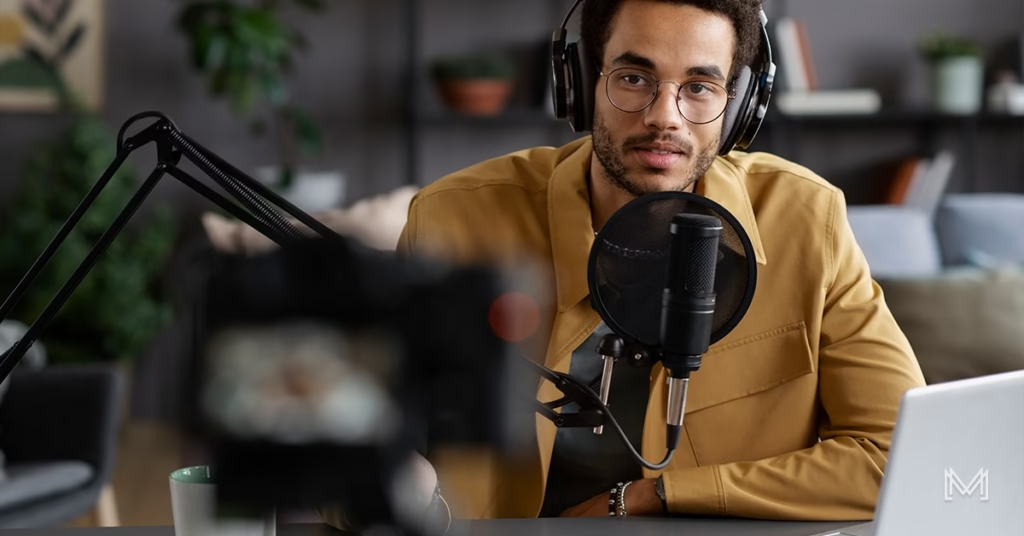From Passion to Paycheque: Becoming a Full-Time Content Creator on YouTube
For many South Africans, turning a passion for creating into a sustainable career is a dream worth chasing. They aspire to become content creators on YouTube. With the rise of the creator economy, Black entrepreneurs and SMMEs (small, medium, and micro-enterprises) are increasingly looking to YouTube. They use it as a platform to share their stories, showcase their talents, and build thriving businesses. But what does it really take to go full-time as a content creator on YouTube?
This article examines the qualifications needed. It also looks at the time investment and resources needed to make high-value, high-quality content. This content can ultimately lead to a sustainable career. Whether you’re a budding entrepreneur in Soweto or a creative in Durban, this guide is for you.
The Reality of Being a Content Creator on YouTube
Becoming a full-time content creator on YouTube is not a get-rich-quick scheme. It requires dedication, skill, and a strategic approach. On average, creators who consistently produce high-value content can reach a point where they can transition to full-time. This process typically takes 3–5 years. The content needs to be attention-grabbing and interest-driven. Additionally, it should be high-quality, meaning well-produced and engaging.
Typically, this means uploading 1–3 videos per week, totalling 100–150 videos annually. For most, it takes around 500 videos to hit the 100,000-subscriber mark, a common threshold for going full-time. Yet, you don’t always need this large an audience to make it work; it’s just a verifiable benchmark.
Relying solely on ad revenue ties your income to YouTube’s algorithm, which can be unpredictable. Diversifying with e-commerce or a personal website ensures stability.
So, what are the prerequisites? To succeed as a content creator on YouTube, you’ll need:
- Time Freedom: 15–25 hours per week to produce quality content.
- Stable Income and Lifestyle: A foundation that allows consistent creation for 3–5 years.
- Capital Investment: R45,000–R75,000 for competitive hardware and software over time.
While a smartphone can get you started, standing out in a crowded niche often requires more advanced equipment. High production quality helps small channels compete with established ones, making your content appealing to new viewers. If you already own a decent computer, the investment is lower. Yet, being competitive with channels boasting 100,000+ subscribers demands more than basic gear.
Breaking Down the Time Investment
Creating content that resonates with audiences is time-intensive. Here’s a realistic breakdown of the effort required for a single 6–12-minute video as a content creator on YouTube:
- Filming: 0.5–2 hours, depending on the complexity of your setup and content.
- Editing: 4–10 hours to polish the video, add effects, and guarantee a professional finish.
- Research and Scripting: 2–6 hours to craft a compelling narrative or informative content.
- Thumbnails, Titles, and Metadata: 1–2 hours to optimise for discoverability.
To keep consistency, creators typically upload 1–3 times per week. This translates to 100–150 videos per year, requiring a significant time commitment. For Black entrepreneurs juggling multiple responsibilities, finding this time can be challenging. Yet, it’s a critical step toward building a sustainable career as a content creator on YouTube.

Investing in the Right Tools
To produce competitive content, you’ll need more than just passion. Investing in quality equipment is essential for standing out. Here’s a breakdown of the startup capital needed for a content creator on YouTube:
- Video Editing Computer (Laptop): ~R20,000 for a machine capable of handling editing software.
- Premium Video Editing Software and Plug-ins: R350–R1,000 for tools like Adobe Premiere Pro or Final Cut Pro.
- Video Camera: R7,000–R35,000, depending on whether you opt for a DSLR or mirrorless camera.
- Camera Lenses: R2,500–R6,000 for versatile lenses that enhance visual quality.
- Proper Lighting: R3,500–R10,000 to guarantee your videos are well-lit and professional.
- Quality Microphone: R600–R2,000 for clear, crisp audio.
While these costs can add up, they’re an investment in your brand. For SMMEs and Black entrepreneurs, starting with what you have, like a smartphone and free editing software, can work initially. Nevertheless, upgrading over time is key to staying competitive as a content creator on YouTube.
The Skills You Need to Succeed
Having the right tools is only half the battle. To excel as a content creator on YouTube, you need skills to match. Without prior experience, you’ll face a steep learning curve, which can stretch the time it takes to grow your channel. Splitting your time between learning and creating often leads to inconsistent content. It can also reduce the quality of your work. That’s why many creators take 3–5 years to reach 10,000 subscribers.
To become proficient, aim to invest around 500 hours across five key areas:
- Video Editing (100 hours): Master software to create polished, engaging videos.
- Content Strategy (100 hours): Learn how to plan content that aligns with your audience’s interests.
- YouTube’s System & Tools (100 hours): Understand analytics, SEO, and platform algorithms.
- Graphic Design and Thumbnail Crafting (100 hours): Create eye-catching thumbnails that drive clicks.
- Lights, Camera, and Audio (100 hours): Perfect your filming setup for professional results.
This 500-hour investment separates the amateurs from the professionals. Without it, many creators produce mediocre content that fails to attract or keep viewers. For Black entrepreneurs, dedicating time to skill-building can set you apart in a competitive space. It helps you resonate with your community and beyond as a content creator on YouTube.
Overcoming the Learning Curve
The learning curve can feel daunting, especially for those starting from scratch. Many new creators struggle with inconsistency, pivoting too often in search of better results. This dilutes their efforts and prevents them from developing the depth of experience needed to succeed. Instead, focus on incremental improvement. For example, aim to get 1% better with each video. Upload 1–2 videos per week. Invest 10 hours per video. This way, you will reach a “threshold of acceptable quality” in your niche. This progress be possible within 1–2 years.
This consistency transforms you from a beginner to an apprentice-level content creator on YouTube. After three years of producing decent videos, you improve toward competitive quality. This quality is indistinguishable from channels with 100,000–1 million subscribers. You are ready to go full-time. Achieving this level of quality requires not just technical skills. It also requires finding your unique voice and niche. This is in lifestyle vlogs, township entrepreneurship stories, or tech reviews tailored to South African audiences.

Monetising Your YouTube Channel
Going full-time as a content creator on YouTube means replacing traditional income with diversified revenue streams. These typically include:
- Ad Revenue: Earnings from ads displayed on your videos.
- Fan Funding: Support from platforms like Patreon or YouTube’s memberships.
- Selling Products: E-commerce, like branded merchandise or digital products.
- Affiliate Links: Commissions from promoting products or services.
- Sponsored Content: Paid partnerships with brands.
To achieve a sustainable income of R50,000–R75,000 per month, creators often rely on long-term sponsorships. These sponsorships typically range from 6 to 12 months. They also use passive income streams like affiliate links and e-commerce. The number of views needed varies by niche. For example:
- Gaming: 2–5 million views per month.
- Real Estate: 250,000 views per month.
These figures can translate to R45,000–R65,000 monthly, assuming your content is monetised. Yet, relying solely on ad revenue ties your income to YouTube’s algorithm, which can be unpredictable. Diversifying with e-commerce or a personal website ensures stability. This is especially true for Black entrepreneurs. They aim to build wealth independent of platform changes.
Scaling for Long-Term Success
Once you’re earning R100,000 annually as a content creator on YouTube, resist the urge to inflate your lifestyle. Instead, reinvest in your channel. You can hire a full-time editor. They can produce 25–100 high-quality videos per year. This can elevate your content to the best in your niche. This is often more effective than starting a second channel. Another smart move is building your own e-commerce store or website. This can generate R50,000–R75,000 in reliable income. It remains independent of YouTube’s ad revenue.
This 500-hour investment separates the amateurs from the professionals. Without it, many creators produce mediocre content that fails to attract or keep viewers.
For SMMEs, this approach aligns with creating a sustainable business model. By tying your income to value rather than time, you can scale your efforts without burning out. For example, a content creator on YouTube focusing on South African fashion sell curated clothing lines. A tech creator offers online courses. These ventures give financial security and strengthen your brand.
Challenges and Opportunities for Black Creators
For Black entrepreneurs and communities in South Africa, becoming a content creator on YouTube offers unique opportunities and challenges. The platform lets you share authentic stories, from township life to cultural heritage, resonating with local and global audiences. Yet, limited access to resources, like high-end equipment or reliable internet, can be a barrier. Start small. Use free tools like Canva for thumbnails or DaVinci Resolve for editing. Tap into community networks for support.
Moreover, representation matters. By creating content that reflects Black South African experiences, you can inspire others while building a loyal audience. Collaborate with other local creators to amplify your reach. Engage with your community through comments and social media to foster trust. These connections can lead to sponsorships and partnerships with brands eager to tap into your audience.
Getting Started Today – Content Creator on YouTube
Ready to become a content creator on YouTube? Start with what you have: a smartphone, free editing software, and a story to tell. Focus on consistency, aim for incremental improvement, and invest in learning the skills outlined above. Join online communities, like YouTube Creator Academy or local creator groups, to stay motivated. For inspiration, look at creators like Warten Weg. They have built thriving channels by staying true to their roots.
If you’re curious to dive deeper, explore resources. Look for those like Create Something Awesome: How Creators Are Profiting from Their Passion in the Creator Economy. These resources offer practical tips on monetising your passion. You can turn your passion into a paycheque on YouTube. This is possible with dedication. You also need the right tools and a commitment to learning.

FAQ’s about Content Creator on YouTube
How long does it take to become a full-time YouTube creator?
It typically takes 3 to 5 years. You need to consistently produce high-value content. This effort helps you reach a point where you can transition to being a full-time creator.
How much money do I need to start a competitive YouTube channel?
You should plan for a capital investment of R45,000–R75,000 over time for competitive hardware and software. Still, you can start with just a smartphone.
What skills are essential for success on YouTube?
To succeed, you must become proficient in video editing, content strategy, YouTube analytics, graphic design for thumbnails, and filming techniques.
How can I make a sustainable income from my channel?
A sustainable income comes from diversifying your revenue streams beyond just ads. Include fan funding, merchandise, affiliate links, and brand sponsorships as well.
How much time do I need to commit each week?
Creating quality content requires a significant time commitment, typically between 15 and 25 hours per week for producing 1-3 videos.


